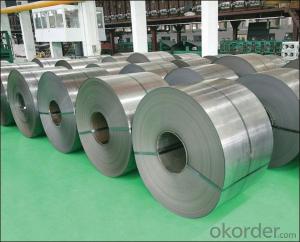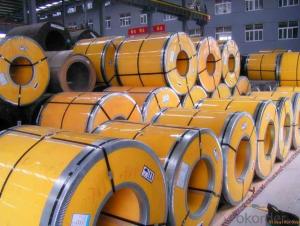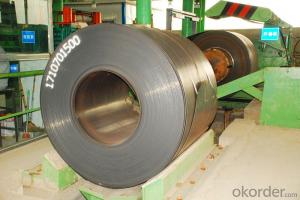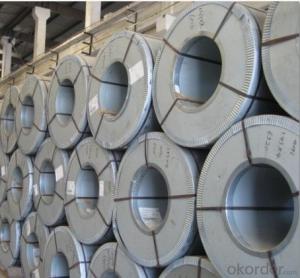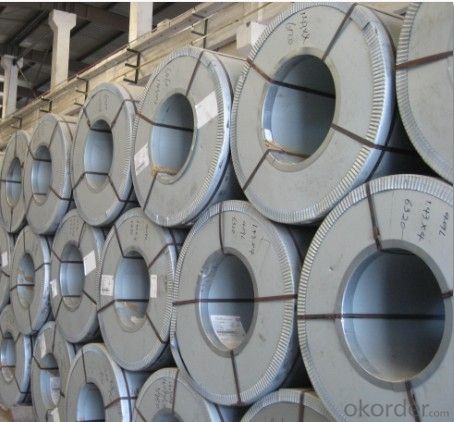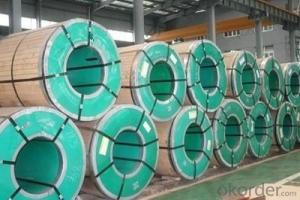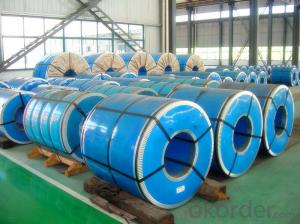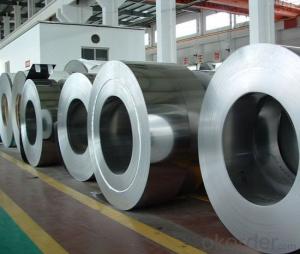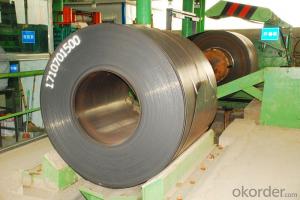Stainless Steel Coil 201 Hot Rolled Narrow Coil J1-J4
- Loading Port:
- Lianyungang
- Payment Terms:
- TT OR LC
- Min Order Qty:
- 500 m.t.
- Supply Capability:
- 8000 m.t./month
OKorder Service Pledge
OKorder Financial Service
You Might Also Like
Hot Rolled Stainless Steel Coil
201 Narrow/Wide Strip No.1 Finish
Packaging Detail: For customer's requirement
Delivery Detail: 10-30days
201 Hot Rolled Stainless Steel Coil Specifications
THK:2.3/2.5/3.0/4.0mm
Width:485/510/550/610/1010/1240mm
Face:No.1
201 Hot rolled stainless steel Coil Application
Stainless steel is a production which not easy rust,acid resistance and corrosion resistance,so it is widely
used in light industry,heavy industry,daily necessities and the decoration industry.
201 Hot Stainless Steel Coil Chemical Composition(WT%)
(C):≤0.15, (Si):≤0.75, (Mn):5.5~7.50, (Cr):16.0~18.0, (N):≤0.25, (Ni):3.50~5.50, (P):≤0.060, (S):≤0.030
201 Hot Rolled Stainless Steel Coil
Strength Of Extension:100,000 To 180,000 Psi;
Yield Strength:50,000 To 150,000 Psi
Elongation :55 To 60%;
Modulus Of Elasticity:29,000,000 Psi;
Density :.280lbs/Cubic Inch(7.93g/Cm3)
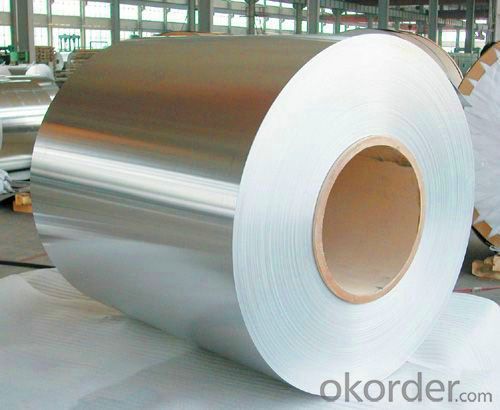
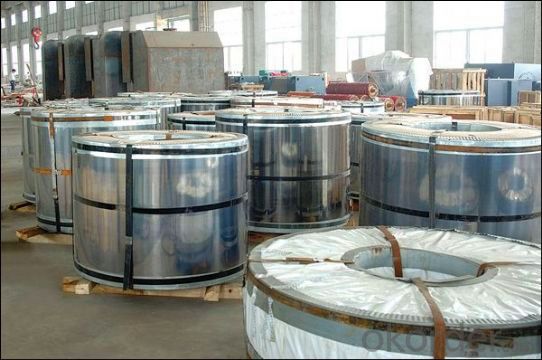

- Q: How do stainless steel strips resist intergranular corrosion?
- Stainless steel strips resist intergranular corrosion primarily due to the presence of chromium in their composition. Chromium forms a protective oxide layer on the surface of the steel, which acts as a barrier against corrosive elements. This oxide layer is self-repairing, ensuring the strips retain their corrosion resistance even if damaged. Additionally, stainless steel strips are often alloyed with other elements such as molybdenum, which further enhances their resistance to intergranular corrosion.
- Q: Are 111 stainless steel strips suitable for high-wear applications?
- No, 111 stainless steel strips are not suitable for high-wear applications. While stainless steel is generally known for its corrosion resistance and durability, the specific grade 111 falls under the austenitic stainless steel category, which is less resistant to wear and tear compared to other grades such as 304 or 316. In high-wear applications, where the material is subjected to constant friction, abrasion, or impact, it is advisable to use a higher-grade stainless steel to ensure better performance and longevity.
- Q: How do stainless steel strips perform in the presence of chlorine?
- Stainless steel strips have excellent resistance to chlorine. They are highly corrosion-resistant and can withstand exposure to chlorinated environments without significant degradation or damage.
- Q: What are the common uses of stainless steel strips in the pharmaceutical manufacturing process?
- Stainless steel strips are commonly used in the pharmaceutical manufacturing process for various purposes such as secure packaging of medications, production of sterile equipment like syringes and needles, fabrication of pharmaceutical machinery and equipment, and construction of cleanrooms and controlled environments to maintain strict hygiene standards in the production facilities.
- Q: Are stainless steel strips suitable for water treatment plants?
- Yes, stainless steel strips are suitable for water treatment plants. Stainless steel is a corrosion-resistant material that can withstand exposure to water and various chemicals commonly used in water treatment processes. It offers excellent durability and longevity, making it a reliable choice for infrastructure in water treatment plants. Stainless steel strips can be used in various applications within these plants, such as piping, tanks, valves, and other equipment. Additionally, stainless steel is hygienic and easy to clean, which is essential in maintaining water quality. Overall, stainless steel strips are a suitable and beneficial material for use in water treatment plants.
- Q: Can stainless steel strips be polished?
- Yes, stainless steel strips can be polished. Stainless steel is a versatile material that can be polished to achieve a variety of finishes, ranging from a reflective mirror-like finish to a brushed or satin finish. Polishing stainless steel strips can be done using various methods, such as mechanical polishing, electrochemical polishing, or chemical polishing. The choice of method depends on the desired outcome and the specific requirements of the application. Polishing stainless steel strips not only enhances their aesthetic appeal but also helps to improve their corrosion resistance and cleanability.
- Q: Are stainless steel strips suitable for oil and gas applications?
- Yes, stainless steel strips are suitable for oil and gas applications. Stainless steel offers excellent resistance to corrosion, making it highly suitable for use in oil and gas environments where exposure to corrosive substances is common. Additionally, stainless steel strips have high strength and durability, allowing them to withstand the harsh conditions and pressures often found in oil and gas operations. They also have good heat resistance and can maintain their mechanical properties at both high and low temperatures. These properties make stainless steel strips ideal for a wide range of applications in the oil and gas industry, including pipelines, storage tanks, and offshore platforms.
- Q: Can stainless steel strips be used in the medical device manufacturing industry?
- Indeed, the medical device manufacturing industry can utilize stainless steel strips. Stainless steel, known for its exceptional qualities, is highly favored in the medical sector owing to its distinctive properties that render it appropriate for a wide range of applications. Its resistance to corrosion, durability, and ease of cleaning are vital for guaranteeing the safety and hygiene of medical devices. Consequently, stainless steel strips find their application in the manufacture of surgical instruments, orthopedic implants, dental tools, and other medical equipment. Moreover, the convenience of shaping, welding, and sterilizing stainless steel strips makes them an ideal choice for the medical device manufacturing industry.
- Q: Can stainless steel strips be used in the aerospace landing gear?
- Yes, stainless steel strips can be used in the aerospace landing gear. Stainless steel is known for its high strength, corrosion resistance, and durability, making it suitable for the demanding conditions and heavy loads experienced by aircraft landing gear.
- Q: What are the common product forms in which 111 stainless steel strips are available?
- Various product forms of 111 stainless steel strips are readily available to meet different applications and needs. These include coils, sheets, slit strips, precision strips, flat bars, and foils. Coils are commonly used in automotive, construction, and appliances industries. They offer convenience to manufacturers as they can be easily shaped and sized. Sheets are used in architectural applications, kitchen equipment, and for decorative purposes. They can be easily cut, bent, and formed according to specific requirements. Slit strips are narrow and long, and commonly used in applications such as gaskets, seals, and electrical components. They come in various thicknesses and widths to suit specific needs. Precision strips are manufactured with tight tolerances and high surface quality. They are used in critical applications where precise dimensions and superior surface finish are required, such as in the medical and aerospace industries. Flat bars, which provide strength and stability, are widely used in structural applications, support frames, and machine components. They offer a larger surface area for load distribution. Foil-form stainless steel strips are thin and flexible, commonly used in packaging, electronic components, and heat exchangers. They provide excellent corrosion resistance and can be easily molded into complex shapes. It is important to consider that the availability of these product forms may vary depending on the manufacturer and specific industry requirements.
Send your message to us
Stainless Steel Coil 201 Hot Rolled Narrow Coil J1-J4
- Loading Port:
- Lianyungang
- Payment Terms:
- TT OR LC
- Min Order Qty:
- 500 m.t.
- Supply Capability:
- 8000 m.t./month
OKorder Service Pledge
OKorder Financial Service
Similar products
Hot products
Hot Searches
Related keywords
